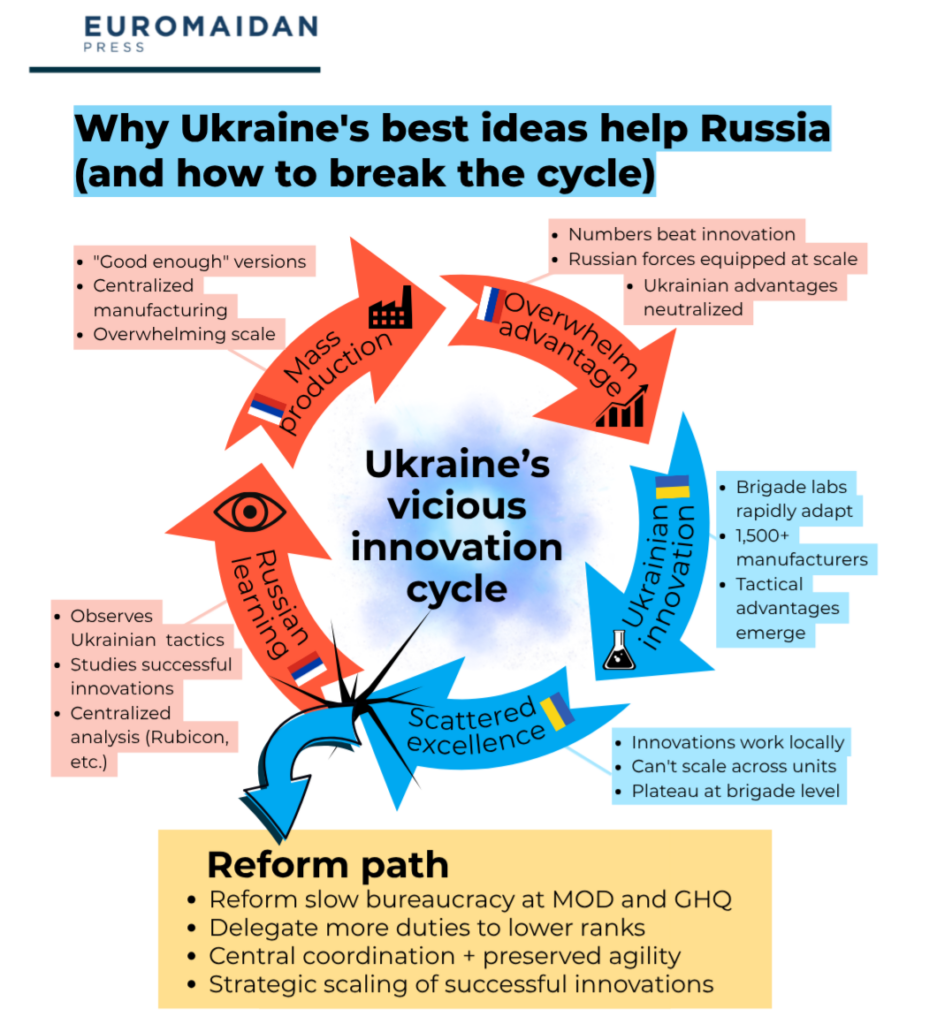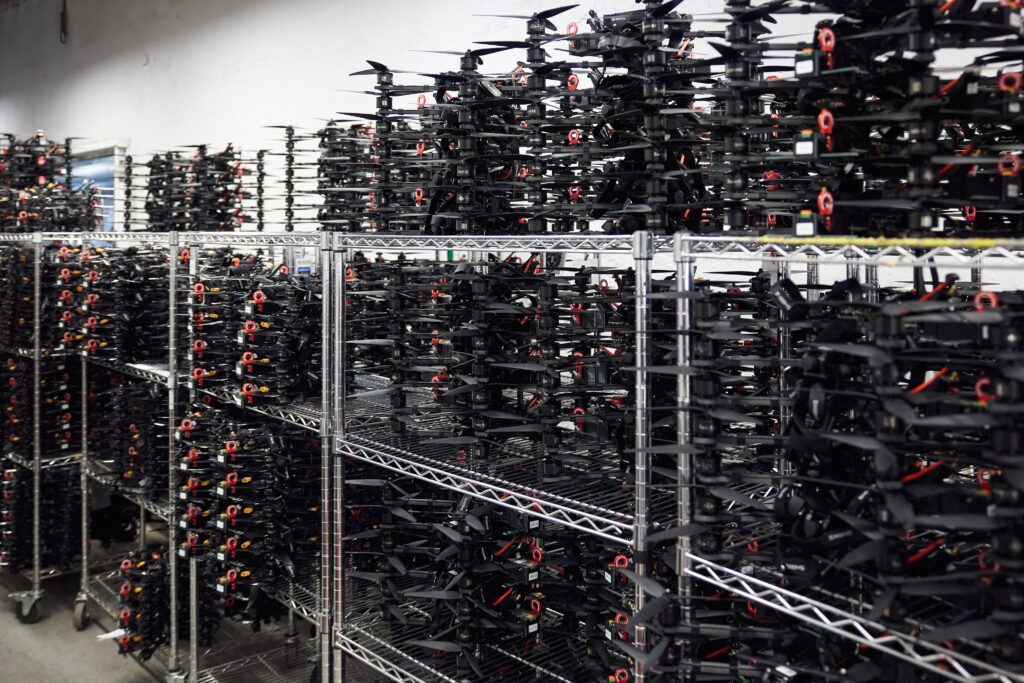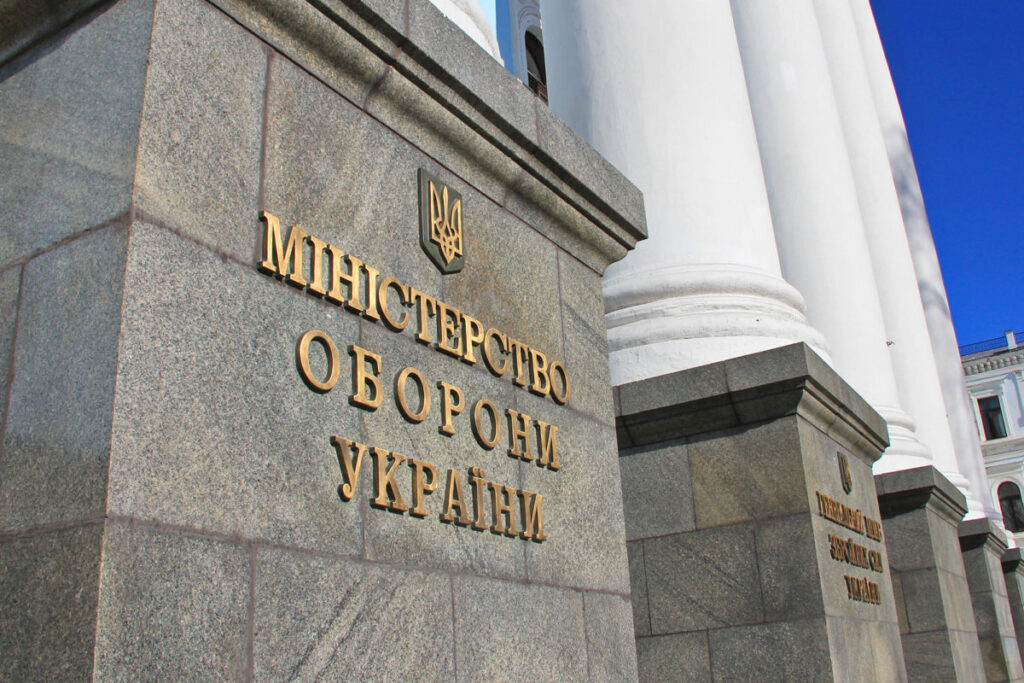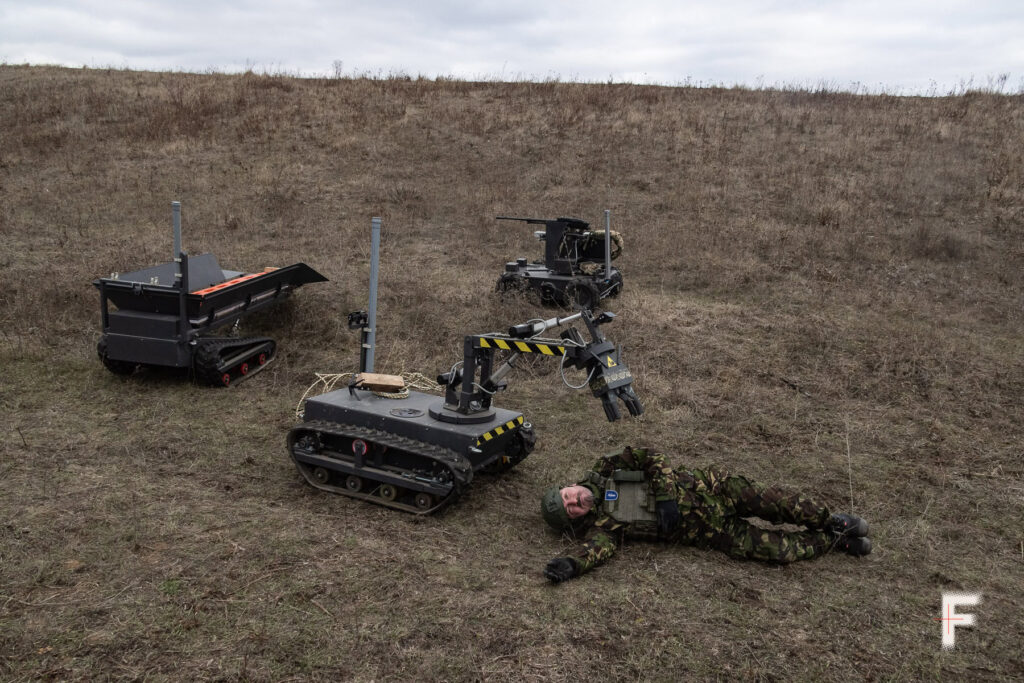Key points
Ukraine’s brigades each have their own “battlefield lab” to conduct R&D in partnership with drone developers
This approach is done out of necessity, as Ukraine lacks the capacity for timely, centralized R&D
This allows units to stay agile in response to the changing battlefield, but Ukraine as a whole fails to capitalize on these innovations
Russia’s adaptations are often, but not always, less state-of-the-art, but generally “good enough” to keep up with and overwhelm the defenders
To solve this, Ukraine needs to reform its central decisionmaking bodies — increasing delegation, cutting post-Soviet bureaucracy and improving coordination between units and the center
Grassroots innovation has been one of Ukraine’s assets in the drone war against Russia. Failure to build on it is holding the country back.
Big states, including Russia, tend to have central bodies handling military procurement, research and development. On paper, Ukraine has the same policy.
In practice, just about every brigade has its own R&D labs, working directly with weapons manufacturers, of which there are well over a thousand.
This means Ukraine has a huge breadth of innovation, experience, and adaptability spread across its corps, brigades, and battalions. This translates into agility, which gives the country its drone warfare edge.
However, Ukraine has struggled to scale these things, or combine them into a single strategic vision, according to interviews with military insiders. Right now, the state isn’t so much harnessing the chaos as putting up with it, because it can’t do anything else.
If Ukraine hopes to win the war, it must unite these scattered strengths into a unified, reality-based vision. This will only be possible by reforming its core institutions to remove the Soviet inertia that hinders decisionmaking and sabotages coordination between brigades and the center. Only then will it be able to push innovation to the fullest, and have a hope of beating Russia.
“The way the system works, people can't get their ideas through to the military, through to the general staff and the Ministry of Defense in a sensible time, so they just do it,” said Glen Grant, a retired British colonel who advises Ukraine militarily.
“So in effect… they’re breaking the law. But they don't have any other choice if they want to stay alive.”

This creates a cycle that's both blessing and curse for Ukraine:
- Ukraine’s decentralized agility leads to rapid improvements in tech and tactics;
- But these innovations quickly plateau because they’re scattered all along the line;
- Meanwhile, Russia learns, catches up, and uses its centralized state machine to out-scale and overwhelm defenders.
“You win a war by coherence,” Grant said. “Yes, it's great to have people doing different things, but they need to be at least under some sort of sensible direction.”
The Ukrainian way of doing things
Ukraine has a strong volunteer tradition. During the Euromaidan Revolution of 2013-2014, many civic organizations formed to resist the pro-Russian government of former president Viktor Yanukovych.
Many then oversaw reforms and monitored corruption. Volunteers supplied Ukraine’s weakened forces during Russia’s incursion into Donetsk and Luhansk Oblasts starting in 2014.
“It’s kind of the Ukrainian way to do things,” Valentyn Prokopchenko, a soldier with the 13th Khartia Brigade, told Euromaidan Press.
This way of doing things was pushed into overdrive during the full-scale invasion. Tens of thousands of civilians mobilized to support the troops, crowdfunding and delivering supplies, technology, and weapons. The country’s cornucopia of techies began working on ways to weaponize drones to counter Russia’s advantage in numbers and firepower.
Ukraine's cornucopia of techies found ways to weaponize drones to counter Russia’s advantage in numbers and firepower
These bootstrap efforts turned into an industry, eventually spawning more than 1,500 companies that now continually develop, manufacture, and improve drones. They often work with the troops that use them, taking lessons and feedback directly from the battlefield.

All the best-known units that use drones have this system — the 13th Khartia Brigade, the 414th Unmanned Strike Aviation "Birds of Madyar," the 3rd Assault Brigade, the 429th Unmanned Systems Regiment "Achilles," and others.
Recently, the 7th Rapid Response Corps told Ukrainian media they’d be opening a new R&D center to work on electronic warfare, UAVs and air defense with an unnamed partner. According to the interview, the 7th is open to working with “every company that serves the armed forces.”
Thanks to this system, “either the drone itself, or the munitions it carries, or the release system, or the optics — are constantly being improved,” Serhii Kuzan, chair of the Ukrainian Security and Cooperation Center, told Euromaidan Press.
The tactics are improving as well. Kuzan likened this frontline experience and iteration to a martial school "where fighters teach and fighters graduate. Consequently, at this grassroots level, we are significantly better than the Russians.”
What do these military R&D centers actually do?
At the simplest level, unit-based R&D often spends time modifying drones to be able to solve their specific challenges on the front line. Often this involves fiddling with electronics, to make the machine less susceptible to whatever jamming is in favor this week.
“It’s very rare that you get a UAV and it works [out of the box,]” Prokopchenko said. “We have this game of suppressing different radio channels… we constantly have to play with frequencies and how to jam them.”

This also involves modifying different manufacturers’ drones to be more like one another, so the brigade can use them more effectively. As well, the units also have to modify the firmware to either remove vulnerabilities, or make them more robust against countermeasures.
Ukrainian manufacturers are constantly iterating components to make batteries last longer or target acquisition systems to work from farther away, for example. New designs for drones are constantly developed and have to be field-tested, to then be improved once more. The brigade-level R&D centers are a part of that process.
The Brave1 military tech cluster works with Ukrainian companies, funding them to help develop better drone warfare tools. Much of their output is bought up by the state, but many manufacturers have a direct line to the units that use their products.
“We are trying to have close and constant communication with producers and trying to reach a level where we can use UAVs, such as FPVs, right from the producer,” Prokopchenko said. “We are not at this level at the moment.”
Centralization and its discontents
Grant allowed that having their own R&D makes units more responsive. But the military’s reliance on this system is also a symptom that it is not working as intended.
For one, decentralized R&D and procurement is actually illegal, despite being the norm.
“The structure of the Armed Forces does not provide for the presence of specialized units that would be engaged in R&D,” said Viktor Kevliuk, a retired Ukrainian colonel with the Center for Defense Strategies.
The official “three whales” of R&D are:
- the General Staff’s military-scientific department
- the Institute of the Armed Forces
- the MOD’s Department of Military and Technical Policy.
“These processes are extremely bureaucratic, go back to the Soviet past, and involve such dinosaurs as calculation materials (the developer sets the price contrary to the market, because it is so convenient),” Kevliuk said.
“Corruption, lobbying, access to resources, in particular financial ones, testing grounds, the lack of contracts for the development of equipment needed by the army, the lack of funding for all this lead to a lack of working capital for manufacturers.”

Said manufacturers are forced to make tech at their own expense and are deprived of the opportunity to plan their development, train, and maintain qualified staff.
The same is true when it comes to supplying the troops.
While there is a system, units are forced to work through volunteers because if tomorrow, they need a pair of boots, a weapon, a vehicle or a drone, these things can take weeks to reach them. They’re forced to rely on volunteers or working directly with suppliers, rather than the military hierarchy.
“One of the corps just said that basically, you know, they can't get stuff agreed by MOD in a sensible timeframe,” Grant said. “So they just now ignore them.”
“The command of the Armed Forces of Ukraine is forced to turn a blind eye to this situation or at least somehow put it in order, because today the Defense Forces cannot function without this chaos,” Kevliuk said.
“The same situation is with UAVs, electronic warfare, laptops, protected communication phones and much more. This is a huge problem that the [joint logistics] of the General Staff must solve… The army should fight, not research.”
"Imagine the following picture: 20 corps have created research units; 20 units have developed one new model each," Kevliuk said. "What operational and technical requirements do these developments meet, in addition to the tasks set by the corps command? What to do with this next?"
Grant said something similar. “If you don't have a strategy for how you're going to win the war, then you don't have the subsidiary strategies that accompany that like IT, weapons, R&D.”
Without a strategy, Ukraine is left with “active defense, which is failing in many ways.
Russia’s strategy: adapt and overwhelm
Russia, with its autocratic central government, is much more centralized in how it does things. For Ukraine, this was a good thing when Russia would order entire armor columns into concentrated artillery fire.
It became much more of a problem when Russia started to learn from its mistakes and scaled up its own drone programs, such as with the Center for Advanced Unmanned Technologies "Rubicon."
In the words of Come Back Alive Fund consultant Taras Tymochko, Rubicon “taught the enemy how to fight.”

The Russians do use their own ad-hoc solutions out of necessity. Prokopchenko said that from time to time, he’s seen enemy drones with extra cameras bolted on, for example. “From what I see, these solutions are on a primitive level.”
“But the real innovation comes from the center — from big units like Rubicon or big producers,” he added.
These central innovations tend not to be the best-in-class, according to Prokopchenko. From his battlefield perspective, Russia seems more interested in creating something “good enough,” and then making it in very large numbers.
In sufficient quantities, “good enough” is more than enough to be a huge problem for defenders.
Russia also has the luxury of learning from the Ukrainians. “Their tactics using drones are quite similar to us and they try to copy every successful move from our side, with a time delay,” Prokopchenko. “Sometimes, at least in the past year, they are ahead,” for example with developing drones guided by fiber optic cable.
Russia is interested in creating something "good enough" and then making it in very large numbers
Russian “electronic warfare and drone warfare keeps adapting and adapting quickly,” Grant said. “They must have a strong lessons learned process so there has to be, and I don't know how they're doing this but there has to be strong feedback from the front line into whatever areas of technical competence they've put together.”
"The Russians are stronger in centralization and scaling," Kuzan said. "If we want to intercept the initiative, we have to put a lot more resources into this area of development."
How to fix the system
To achieve this, Ukraine needs to take some tough steps, insiders told Euromaidan Press.
For one, logistics are a mess. “Each supply service of the logistics command has its own nomenclature, according to which it carries out supplies. A single nomenclature, which would include everything that the army needs, does not yet exist,” Kevliuk pointed out.
Weapons producers need to be able to work at full capacity. Right now, they can only afford half-capacity on average.
Every UAV developer who spoke to Euromaidan Press in the past three weeks said they want to increase R&D, if only they can get the income.

Weapons exports, foreign aid and investment, and grants from Brave1 can help raise some cash. But even with money in hand, decisions on how to spend it are too slow and frequently made by people without strategic vision or frontline experience.
This goes back to Ukraine’s post-Soviet legacy at the top levels of leadership. There is limited delegation of responsibility, and breaking the rules risks harsh punishment or removal. This approach stunts initiative in the ranks and slows down the system.
“The parliament, the economic bloc of the Cabinet of Ministers, and the Ministry of Defense apparatus should fight the whales,” Kevliuk said.
“They need to rethink the organizational structure for dealing with these things,” Grant added. “It’s too top-heavy, the system. You’ve got generals who don’t understand anything and have not done the front-line fighting making decisions on things that should be made by captains.”
“The old school needs to be cleared out and, if anything, [Ukraine needs to get] a lot more youngsters and civilians into the system,” he said. “People who actually know what they're doing.”
And among all these reforms, Ukraine should not throw the baby out with the bathwater, Prokopchenko believes. He said that the agile, decentralized R&D on the corps and brigade level is worth preserving, if it can be improved.
“We should think on how to enhance this practice, scale it, and give it the resources for the best,” Prokopchenko said. “I’m sure if we tried to copy some other models that aren’t good for us by nature, we will fail. I’m sure 100% we can’t copy the Russians’ model.”




